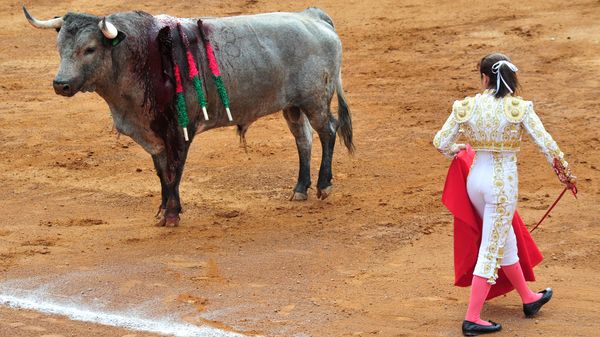Two Strangers, One Handshake: The Children Who Showed Us What Unity Looks Like
It began as an ordinary flight — the kind most people take without remembering much about it afterward. On May 6, passengers boarded a small plane bound from St. Pete’s to Flint, Michigan, shuffling through the narrow aisle with carry-ons, earbuds, and weary faces. There were parents, business travelers, vacationers returning home — and two families who had no idea their children were about to remind the world of something beautiful.
Among them was a woman named Kenya Menzies-Peoples and her young son, six-week traveler turned shy flyer, little Shauntay. At only a few years old, he was quiet, his tiny hand clinging to his mother’s. Flying wasn’t new to adults, but for a child, it was overwhelming — the hum of the engines, the strangers, the confined space. A few rows away sat another family — a father, mother, and their curious daughter, Kendell. She was about the same age as Shauntay, bright-eyed and restless, her excitement impossible to contain.

Airplanes are curious places. They hold hundreds of people sitting inches apart yet often feeling worlds away from one another. We lower our heads, plug in our headphones, and disappear into our screens. But children don’t live behind those invisible walls. They see the world with curiosity, not caution. And Kendell saw something that day that adults might have missed entirely — a little boy sitting quietly, looking nervous, needing a friend.
As the plane rose into the air, Kendell leaned over, extended her hand, and did something simple but extraordinary. She reached out and gently took Shauntay’s hand.
There were no words — just that soft, small gesture. His hand relaxed in hers, and for the rest of the flight, the two children sat like that: fingers entwined, quiet but connected.
A fellow passenger noticed and took a photo. It wasn’t staged, polished, or posed. It was a real moment — two children, different races, different families, holding hands without hesitation. The image captured something profound: what the world could look like if kindness came first.
By the time the plane landed, the two were no longer strangers. They stood up, still holding hands, smiling shyly at one another as they followed their parents down the narrow aisle. The photo that captured their friendship would soon travel much farther than the plane ever could.
When it hit social media, hearts across the country melted. “This is how the world should be,” one commenter wrote. Another said, “Colorfree, yet so colorful,” echoing the caption that soon became synonymous with the story.
When Shauntay’s mother, Kenya, saw the photo, she was stunned — not just by how much attention it had received, but by what it represented. “It’s kids being kids,” she told CBS in an interview. “When left to their own devices, everybody is naturally nice.”
Her words carried weight. Because what this moment revealed wasn’t just the innocence of childhood — it was a reflection of how far adults sometimes drift from that instinctive goodness. Children don’t see categories. They don’t weigh appearances, accents, or differences. They see another human and reach out.

In the weeks after, the photo became a symbol of unity — shared across news outlets, blogs, and community pages. It found its way into classrooms, sermons, and family dinner conversations. People saw in that image a glimpse of hope — a reminder that empathy doesn’t need to be taught; it needs to be remembered.
For the families involved, life went back to normal, but the memory lingered. For Kenya, the moment served as a reminder that kindness begins young — and that sometimes, children can teach the lessons adults forget.
And for Kendell’s family, it became a story of pride — not because it went viral, but because it showed who their daughter truly was when no one asked her to act.
Maybe that’s why the story resonated so deeply. In an age when we scroll past headlines about division, anger, and fear, this one stood out precisely because it was so small, so human, and so pure. A little girl reached across an invisible line — and by doing so, she erased it.
There’s something sacred in that. Something the world desperately needs to see more of.
When Kendell and Shauntay held hands that day, they didn’t just comfort each other on a short flight. They reminded millions that connection doesn’t have to be complicated. It doesn’t take grand gestures or speeches. Sometimes, it takes nothing more than reaching out — and holding on.
As the plane descended and passengers prepared to leave, those two small hands stayed linked. And for everyone who saw that picture afterward, the message was clear: compassion doesn’t need a passport, and kindness doesn’t care what seat you’re in.
Because the truth is, the world doesn’t change through laws or speeches alone — it changes every time someone, even a child, chooses love over fear.
La Plaza de Toros México — one of the largest bullrings in the world — has just announced a complete end to traditional bullfighting

For centuries, the art of bullfighting — la corrida de toros — has been woven into the cultural fabric of Mexico. It was more than just a spectacle; it was a ritual, a performance of bravery, rhythm, and color. The trumpet calls, the sea of sombreros in the stands, the swirl of red capes, and the roar of the crowd — all were part of an experience that many considered a cornerstone of Mexican identity.
And yet, in 2025, that sound has fallen silent.
La Plaza de Toros México, the largest bullring in the world and a symbol of the tradition’s grandeur, has officially announced that traditional bullfights will no longer be held. The statement sent shockwaves through the nation, signaling not only the end of a pastime but also the close of a chapter in cultural history.

Built in 1946 in the heart of Mexico City, La Plaza de Toros México could hold more than 40,000 spectators. For decades, it was a temple of passion — a place where matadors became legends, where artistry met danger, and where generations gathered to witness what was seen as a timeless dance between man and beast. The decision to end these events marks a turning point, a symbolic shift from the past toward a new future.
The move follows years of debate, court battles, and growing activism around animal rights. While bullfighting has long been defended as part of Mexico’s cultural heritage, a growing number of citizens — particularly younger generations — have questioned whether tradition should outweigh compassion. Across social media, discussions about ethics, empathy, and modern values have grown louder, reflecting a global change in attitudes toward animals and entertainment.
For many Mexicans, the announcement feels bittersweet. Older generations remember the pageantry and artistry of la fiesta brava — the dazzling costumes, the music of the brass bands, and the poetic symbolism of courage and death. To them, bullfighting was an art form, a display of skill and emotion rooted in centuries-old Spanish and Indigenous influences.

But for others, this change represents something far greater: progress. Activists, writers, and educators see this as a triumph of empathy — the moment when society chose life over legacy. “We’re not erasing our history,” said one supporter, “we’re evolving it.”
In the words of animal welfare advocate Laura Martínez, “This is about redefining what we celebrate. Mexico’s culture is vast — our art, our food, our music, our festivals. We can honor our traditions without glorifying suffering.”
Indeed, the silence of the arena is not an empty silence. It is the beginning of something new.
Plans are already underway to repurpose La Plaza de Toros México into a multifunctional venue that celebrates culture in different ways. Concerts, exhibitions, festivals, and sporting events are all being considered. The iconic circular structure, long associated with the tension of the bullring, will now echo with music, laughter, and life. Architects and cultural planners see it as an opportunity to reimagine what heritage can mean in the 21st century.

This transformation mirrors similar changes happening across the Spanish-speaking world. In recent years, several cities in Spain, Colombia, and Ecuador have also banned or restricted bullfighting. Each decision has sparked passionate debates about identity and modernization. For Mexico — a country that has always walked the line between preserving tradition and embracing progress — this moment feels particularly symbolic.
It is not just a local story; it’s a reflection of a broader, global shift. Around the world, societies are reassessing what traditions mean in an age where ethics and empathy play increasingly central roles. Where once strength was defined by dominance, now it is often measured by compassion.
And yet, even among supporters of the ban, there is a quiet acknowledgment of nostalgia — a recognition of what is being left behind. Bullfighting was art to many, and its imagery remains deeply ingrained in Mexico’s history, literature, and visual culture. From Diego Rivera’s paintings to the songs of rancheras, its symbolism will endure, if only as memory.
La Plaza de Toros México will still stand as a monument — not to cruelty or conquest, but to transformation. To a people who can honor their past while daring to change their future. Its vast concrete stands, once filled with cheers and anticipation, will now bear witness to a different kind of energy — one of unity, creativity, and reinvention.
In this silence, there is still poetry.
Perhaps that is the true lesson of this moment: that progress doesn’t have to mean forgetting where we came from. It means finding new ways to express who we are now.
As the sun sets over Mexico City and the red walls of the bullring glow under the fading light, it feels as if the arena itself is exhaling — releasing centuries of echoes, pain, and pride, and making room for new stories.
One chapter closes. Another begins.
The end of an era, yes — but also the birth of something hopeful.
Because in the heart of Mexico, even silence can sing.





